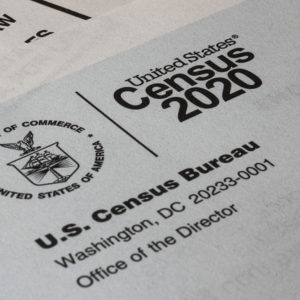A startling figure emerged recently: 567 percent.
According to the latest U.S. Census report, between 2010 and 2020 the number of people of Hispanic/Latino origin identifying with multiple races increased from 3 million to 20.3 million, or 567 percent.
Why?
One reason could be a key census change, in which respondents were allowed more options in identifying their race. Another could be an increased emphasis on multiculturalism and diversity in the past 10 years.
Another could be the Donald Trump Factor, asserted Dr. Marcel Roman, a post-doctoral research fellow at the University of Texas Department of Government who specializes in race and ethnic politics.
“In the past 10 years,” Roman explained to InsideSources, “we’ve observed an increased politicization of race and racism. The rise of Donald Trump and an explicit white nationalism in addition to the critiques that the Black Lives Matter movement has levied may have made Latinxs uncomfortable with identifying with ‘whiteness.’
‘’Even Latinxs who are otherwise proximate to ‘whiteness,’ whether by their social station or how they are perceived by others, may feel as if they are racialized as distinct from Anglo Whites in light of anti-Latinx and anti-immigrant rhetoric.”
Meanwhile, the U.S. population has become more diverse, more city-oriented, and more aged.
The population under age 18 totaled 73.1 million in the census; that’s down from 74.2 million in 2010, or 1.4 percent. Also, the birth rate was trending downward well before the pandemic.
According to data from the Centers for Disease Control and Prevention, the average age of first-time mothers is 27, up from 23 in 2010, especially among White women. One driver in this decline is a sharp drop in teenage pregnancy, which decreased by 64 percent from 1991 to 2015, resulting in $4.4 billion in public savings in 2015 alone.
As women gain in educational and financial achievement, participate more in the labor force, and delay marriage, they become mothers later in life, all of which contribute to a declining birth rate.
“A woman with a high school diploma is more likely to have children in her early 20s,” Dr. Sarah Halpern-Meekin, a professor of family studies and human ecology at the University of Wisconsin told InsideSources. “But a woman with a graduate degree is more likely to have children in her early 30s.”
In other significant developments:
–The nation’s cities are growing faster, as more people apparently prefer urban style to green acres. Metropolitan populations grew 8.7 percent since 2010, and the nation in general increased from 308.7 million in 2010 to 331.4 million. Notably, that’s the slowest 10-year increase since the Great Depression era.
–North Carolina, Virginia, and Georgia recorded Hispanic/Latino surges to reach at least 10 percent of their population as the nation’s residents shift more southward and westward, two developments that could have major political implications come 2022 and 2024.
–The number of Hispanics/Latinos who identified as White alone decreased by 52.9 percent, down from 26.7 million to 12.6 million during the decade.
-The non-Hispanic White population decreased from 196 million to 191 million, with that group slipping below 60 percent of the nation’s total for the first time at 58 percent.
But Roman offered a cautionary caveat about statistics concerning the proportion of the White population, positing, “Given undocumented immigrants are highly embedded in immigrant ethnic communities, which are likely to be non-White, it’s possible that the decline in the relative size of the White population that we are observing in the 2020 census data is an underestimate of the actual pattern.”
Elsewhere, the Hispanic/Latino population was next highest at 62 million (a 23-percent increase), the Black population at 46 million, and Asians at 24 million. Overall, 235.4 million people reported “White alone” or in combination with another group.
-Adults over 18 comprised 75 percent of the population, or 258.3 million, a 10-percent increase. Also, there is no majority racial/ethnic group for young folk under 18, because non-Hispanic Whites in that group declined to 47.3 percent, from 53.5 percent.
William Frey, a demographer and senior fellow at the Brookings Institution’s Metropolitan Policy Program told the Associated Press: “If not for Hispanics, Asians, people of two or more races, those are the only groups underage that are growing. A lot of these young minorities are important for our future growth, not only for the child population but for our future labor force.”
Meaning they will represent an influential portion of our future.


